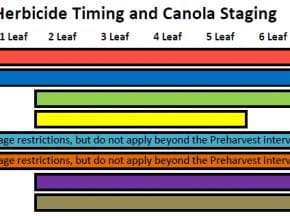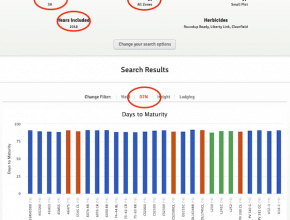Home / Canola Watch / May 21, 2020 - Issue 10
-
A few days of summer-like conditions have weeds thriving, taking up nutrients and topsoil moisture. Whether canola is already emerging, seeded but not emerging, or not yet seeded, now is a good time to remove that costly weed competition. Here are some options for each of those three situations…
-
This quiz is like a matching game. Seven photos. Seven choices. See if you can match all 7…
-
Jim Tansey and Keith Gabert talk about flea beetles – including how far they travel to find the first canola crops, major differences between striped and crucifer species, and how long the risk can last…
-
At around the two- to four-leaf stage, do plants counts for each field to see what percentage of seeds emerged to form plants. This will answer the important question: Did you achieve your target plant population?…
-
Given the value of early weed control, take full advantage of calm conditions to spray. If it’s too windy (more than 20 km/h), the sprayer will probably have to sit idle. But when wind is 10 to 20 km/h, here are some tips to improve performance and reduce drift……
-
The same wind that makes it a challenge to spray also dries out the top layer of soil. Should this dry layer of topsoil mean a change in seeding depth?…
-
Canola seeded in late May and early June will have lower yield potential than canola seeded in early May, and it may run into challenges with timely harvest while farmers wait for the crop to mature. Here are some considerations for late-seeded canola and some tips to help canola mature faster…
-
Still have tough canola in the bin? Warm air has good capacity to dry. For example, at 22°C and 60% relative humidity, canola will trend towards just below 8% moisture content with natural air drying. Therefore, these warm days are ideal for natural air drying…
-
This section provides timely support for canola-related projects outside of Canola Watch…



